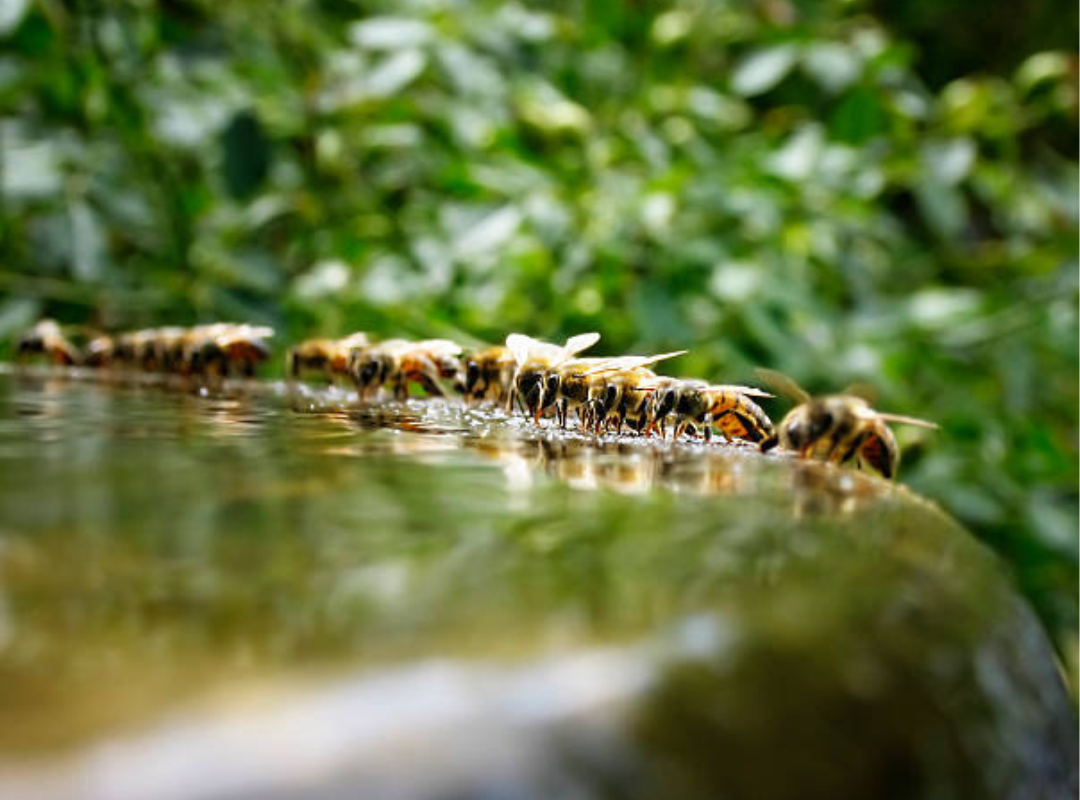
Bees are vital for pollination and ecosystem health, but they can become a problem when they settle in homes or yards. While hiring professionals is often the safest choice, many people turn to natural, DIY solutions to keep bees away without harming them. These methods aim to balance human comfort and environmental conservation. This article will dive into practical DIY natural bee deterrents, dispel common misconceptions, and help identify when professional help is necessary for a safe and humane resolution to bee-related challenges.
Why Use Natural Bee Deterrents?
Using natural bee deterrents is an eco-friendly way to manage bee activity. Unlike chemical pesticides, these methods are less harmful to bees and the environment. Bees play a critical role in biodiversity, and preserving their populations should always be a priority. DIY natural bee solutions aim to redirect bees rather than harm them, maintaining a balance between safety and conservation.
Effective DIY Natural Bee Deterrents
Here are some tried-and-tested methods for deterring bees naturally:
1. Essential Oils as Bee Repellents
Certain essential oils, such as peppermint, eucalyptus, and citronella, are known to deter bees. Their strong scents interfere with the bees’ navigation and communication, encouraging them to stay away.
- How to Use: Mix 10-15 drops of essential oil with water in a spray bottle. Spray the mixture on areas where bees are likely to gather, such as windowsills, outdoor furniture, and garden corners.
2. Vinegar Sprays
Vinegar has a pungent odor that bees dislike, making it an effective deterrent. While vinegar solutions should not be sprayed directly on bees, applying them to surfaces can prevent bees from settling.
- How to Use: Combine equal parts of water and vinegar in a spray bottle and apply it to areas of concern.
3. Planting Bee-Repellent Plants
Strategically planting bee-repellent flora can help keep bees away from your home. Plants like marigolds, cucumber, and citronella grass naturally repel bees due to their scents.
- Tip: Surround patios and entrances with these plants to create a natural barrier against bees.
Ineffective or Harmful DIY Methods to Avoid
Not all DIY methods are created equal. Here are some commonly suggested deterrents that are ineffective or harmful:
1. Using Fire or Smoke Excessively
While smoke can temporarily drive bees away, using fire or excessive smoke is dangerous and harmful to both you and the bees. This method also risks damaging property and harming other wildlife.
2. Homemade Pesticides
DIY pesticides may harm bees, other pollinators, and the environment. Avoid homemade sprays containing harsh chemicals, as they contribute to pollinator decline.
3. Soapy Water
Although soapy water is often recommended, it can kill bees on contact. This method contradicts the principle of humane deterrents and should only be used as a last resort in emergencies.
Signs You Need Professional Help
Despite the effectiveness of natural deterrents, there are instances where DIY methods may not be sufficient. For example, if a large hive develops near your home, it’s safer to rely on fast bee removal services in Orange County. Professional services ensure the safe and humane relocation of bees, protecting both your property and the environment.
Long-Term Prevention Tips
Preventing bees from invading your space in the first place is key to avoiding conflicts. Here are some proactive measures:
1. Seal Entry Points
Inspect your home for gaps, cracks, or openings where bees might enter. Sealing these points prevents bees from establishing colonies indoors.
2. Limit Food Sources
Bees are attracted to sweet foods and beverages. Keep outdoor dining areas clean and avoid leaving sugary substances exposed.
3. Regular Maintenance
Regularly check your property for early signs of bee activity, such as increased buzzing or the sight of scout bees. Addressing these signs promptly can prevent a hive from forming.
Balancing Safety and Conservation
DIY natural bee deterrents are excellent for minor issues and can help maintain harmony between humans and pollinators. However, when faced with significant infestations, professional intervention is the safest and most effective solution. By choosing eco-conscious methods, you contribute to protecting these vital creatures while ensuring your home remains a comfortable space.
In conclusion, while natural deterrents can be effective, it’s important to recognize their limitations. Combine these strategies with preventive measures for optimal results, and don’t hesitate to contact experts when necessary. With careful management, you can coexist peacefully with bees without compromising safety or conservation.